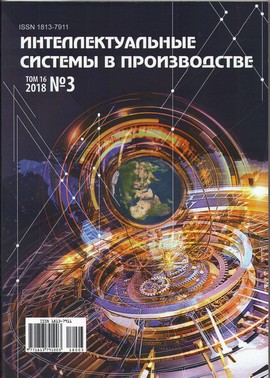О ВЛИЯНИИ ГРАФЕНОВЫХ НАНОПЛАСТИНОК НА ФИЗИЧЕСКИЕ ХАРАКТЕРИСТИКИ ЦЕМЕНТНОГО РАСТВОРА
DOI:
https://doi.org/10.22213/2410-9304-2018-3-160-168Ключевые слова:
графеновые нанолисты, цементный раствор, механическая прочность, структура пор, термический анализ, электрические характеристикиАннотация
Графеновые нанопластинки (ГН) обладают уникальными физическими характеристиками, которые делают их эффективными армирующими материалами. В этом исследовании оксид графена (ОГ) синтезировали окислением графитовых флюсов с помощью модифицированного метода Хаммера. Полученный оксид термически восстанавливали (расслаивали) при 350 °С в течение 6 часов для получения графеновых нанопластинок. Исследовано влияние введения оксида графена и графеновых нанопластинок на механические свойства, структуру пор, термическую стабильность и электрические характеристики затвердевших цементных композитов. ГН и ОГ добавляли в различных количествах: 0, 0,01, 0,02, 0,03, 0,04 и 0,05 % от массы цемента. Прочность на сжатие определяли на 28-е сутки. Для определения температур деструкции использовался термогравиметрический анализ (ТГА), структура пор была исследована с использованием метода адсорбции азота при 77,35 К, микроструктура - с использованием сканирующей электронной микроскопии (СЭМ), и, наконец, была изучена электропроводность ОГ/графен-цементных композиций. Результаты исследования показали, что значительное повышение прочности на сжатие (примерно на 33 %) было достигнуто за счет введения ГН в цементную матрицу в количестве 0,04 %. При этом размер пор значительно уменьшился и было достигнуто значительное улучшение микроструктуры цементного раствора и, как следствие, улучшение электропроводности этих композитов.Библиографические ссылки
B. Han, X. Yu, J. Ou, Multifunctional and Smart Carbon Nanotube Reinforced Cement-Based Materials, Nanotechnology in Civil Infrastructure (2011), pp. 1-47.
Z. Pan, L. He, L. Qiu, A. H. Korayem, G. Li, J. W. Zhu, F. Collins, D. Li, W. H. Duan, M. C. Wang, Mechanical properties and microstructure of a graphene oxide-cement composite, Cem. Concr. Compos. 58 (2015) pp. 140-147.
K. Watanabe, K. Toshihide, N. Junichiro, Synergetic effect of steel fibers and shear-reinforcing bars on the shear-resistance mechanisms of RC linear members, Constr. Build. Mater. 24 (2010) pp. 2369-75.
M.d Z. Hossain., A. S. M. Abdul Awal., Flexural response of hybrid carbon fiber thin cement composites, Constr. Build. Mater. 25 (2011) pp. 670-7.
A. Majid, L. Anthony, S.Hou, C. Nawawi, Mechanical and dynamic properties of coconut fibre reinforced concrete, Constr. Build. Mater. 30 (2012) pp. 814-25.
S. Parviz, W. Jong-Pil, H. Maan, Durability characteristics of CO2-cured cellulose fiber reinforced cement composites, Constr. Build. Mater. 34 (2012) pp. 44-53.
H. Su, J. Xu, Dynamic compressive behavior of ceramic fiber reinforced concrete under impact load, Constr. Build. Mater. 45 (2013) pp. 306-13.
P.K. Nelson, V.C. Li, T. Kamada, Fracture toughness of microfiber reinforced cement composites, J Mater. Civ. Eng. 14(5) (2002) pp. 384-91.
M. S. Morsy, S. H. Alsayed and M Agel, Hybrid Effect of Carbon Nanotube and nano clay on Physico-Mechanical Properties of Cement Mortar, Constr. Build. Mater. 25 (2011) pp. 145-149.
H. Shoukry, M.F. Kotkata, S.A. Abo-el-Enein, M.S. Morsy, Flexural strength and physical properties of fiber reinforced nanometakaolin cementitious surface compound, Constr. Build. Mater. 43 (2013) pp. 453-460.
A.E. AL-Salami, M.S. Morsy, S. Taha and H. Shoukry, Physico-mechanical characteristics of blended white cement pastes containing thermally activated ultrafine nano clays,Constr. Build. Mater. 47 (2013) pp. 138-145.
M. S. Morsy, Y. Al-Salloum, T. Almusallam and H. Abbas, Effect of nano-metakaolin addition on the hydration characteristics of fly ash blended cement mortar, J Therm. Anal.Calorim.DOI 10.1007/s10973 (2013) pp. 3512-6.
H. Shoukry, M.F. Kotkata, S.A. Abo-EL-Enein, M.S. Morsy, S.S. Shebl, Enhanced physical, mechanical and microstructural properties of light weight vermiculite cement composites modified with nanometakaolin, Constr. Build. Mater. 112 (2016) pp. 276-283.
B.W. Jo, C.H. Kim, G.H. Tae, J.B.Park, Characteristics of Cement Mortar with Nano-Si02 Particles, Constr. Build. Mater. 21(6) (2007) pp. 1351-5.
Properties and Applications of Graphene Oxide and Functionalized Graphene. www. azonano.com/article.aspx? ArticleID=4044; Sponsored by Graphenea; 2015.
K. Gong, S.M.ASCE, Z. Pan, A. H. Korayem, Ph.D., L. Qiu, D. Li, F. Collins, C. M.Wang, W. H. Duan, A.M. ASCE, Reinforcing Effects of Graphene Oxide on Portland Cement Paste, J. Mater. Civ. Eng. 2015.
Q. Wang, J. Wang, C. x. Lu, B. w. Liu, K. Zhang, C. z. Li, Influence of graphene oxide additions on the microstructure and mechanical strength of cement, New Carbon Mater. 30(4) (2015) pp. 349-356.
M. Saafi, L. Tang, J. Fung, M. Rahman, J. Liggat, Enhanced properties of graphene/fly ash geopolymeric composite cement, Cem. Concr. Res. 67 (2015) pp. 292-299.
L. Shahriary, A. A. Athawale, Graphene Oxide Synthesized by using Modified Hummers Approach, Int. J. Renew. Energy Environ. Eng. 02(01) (2014) ISSN pp. 2348-0157.
Mohamed Heikal, M. S. Morsy, Ismail Aiad, effect of polycarbxylate super plasticizer on hydration characteristics of cement pastes containing silica fume, ceramics silikaty, 50 (1), (2006), pp. 5-14.
M.M. El-Nahass, H.A.M. Ali, M. Saadeldin, M. Zaghllol, AC conductivity and dielectric properties of bulk tungsten trioxide (WO3), Physica B 407 (2012) pp. 4453-4457
Q. Zeng, K. Li, T. Fen-chong, Pore structure characterization of cement pastes blended with high-volume fly-ash [J]. Cem. Concr. Res. 42(1) (2012) pp. 194-204.
J. L. Provis, R. J. Myers, C. E. White, X-ray microtomography shows pore structure and tortuosity in alkali-activated binders [J]. Cem. Concr. Res. 42(6) (2012) pp. 855-864.
S. Chakraborty, S.P. Kundu, A. Roy, B. Adhikari, S.B. Majumder, Effect of jute as fiber reinforcement controlling the hydration characteristics of cement matrix, Ind. Eng. Chem. Res. 52 (2013) pp. 1252-60.
F. Babak, H. Abolfazl, R. Alimorad, G. Parviz, Preparation and Mechanical Properties of Graphene Oxide: Cement Nanocomposites, Sci. World J. 2014, Article ID 276323.
İ. B. Topçu, T. Uygunoğlu, İ. Hocaoğlu, Electrical conductivity of setting cement paste with different mineral admixtures, Constr. Build. Mater., 28(1), (2012), pp. 414-420.


